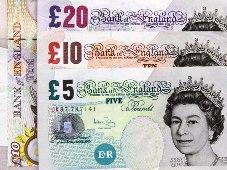 | « Back to article | Print this article |
The interest rate that Libor sets is a piece of fiction written by participating banks to suit their purpose, writes Ajit Balakrishnan
 Last week, I was in New York City and sylvan nearby towns such as Fairfield and Connecticut with a ringside view of events as the Barclays scandal erupted.
Last week, I was in New York City and sylvan nearby towns such as Fairfield and Connecticut with a ringside view of events as the Barclays scandal erupted.
I can say this: most of my friends and acquaintances there connected with the financial world are holding their breath, waiting to see where and how hard the regulatory axe is going to fall.
On June 27, Barclays announced that it would pay a $452-million fine to US and British authorities.
This news, in itself, other than the size of the fine, was no cause for alarm. Most of us assumed that this was a penalty for a technical breach of some bureaucratic rule.
Then, during the following week, in quick succession came the resignations of the bank's chairman, Marcus Agius, its chief executive Bob Diamond, and its chief operating officer, Jerry del Missier.
Then came the bombshell: Paul Tucker, deputy governor of the Bank of England, was said to be implicated. What was going on?
Barclays had been found guilty of submitting false information that had the effect of manipulating the calculation of the London interbank offered rate, or Libor, which is the interest rate at which banks are ready to lend to other banks.
This rate is used as an international benchmark to set interest rates worldwide for loans to businesses for their working capital needs, or to consumers to buy cars and homes or for settling their credit card debts.
In the US, it is even used to compute student loan interest rates.
In other words, it is the rate believed to be set by that mysterious oracle in which we have all come to believe: 'the market'.
Now it turns out that this oracle, 'the market', which we have all been enjoined to trust and believe in, is in reality fixed by a trade association in London called the British Bankers' Association.
Every day, these banks, 14 in all, tell this association at what interest rate they 'could have' borrowed money from each other.
The average of these rates is then published as Libor, which is then used by the whole world to set the interest rates on their loans -- worth $10 trillion in all.
What everyone, or at least the lay public, has missed is that Libor is not the actual rate at which these banks borrow from each other, but a guess at what they 'could have'.
This delicate difference allowed Barclays to submit almost any number it chose as its borrowing rate.
Emails unearthed during the investigation show that Barclays stated rates that would profit the trades it was doing. Stripped of arcane language, it means that the interest rate that Libor sets is a piece of fiction written by these participating banks to suit their purpose.
Here is a bit of dialogue from an email that the investigators found, which, in the future, will rank in heartlessness up there with what Queen Marie Antoinette of France supposedly said when she was told that French peasants had no bread to eat, 'Let them eat cake'.
The Barclays trader in New York wrote to the Barclays executive in London who made the submissions for Libor: "Hi guys, we have a big position in . . . Libor . . . for the next three days . . . can you please keep [the rate] at 5.39 for the next few days? It would really help. . . ."
The colleague in London answered: "For you, anything . . . done for you big boy".
Barclays is no ordinary bank.
"It dates back to 1690, four years before the Bank of England was founded.
Lenders at that time considered Barclays a safe pair of hands to lend to. It weathered the South Sea Bubble of 1720, which felled many other banks.
Also, by all accounts, it stayed away on moral grounds -- it was founded by a Quaker family -- from the great business opportunities of its early days, like financing wars and the slave trade.
What are the likely consequences of the Barclays scandal?
To start with, investigations have started to discover other examples of rate-fixing in multiple countries.
These enquiries are likely to cover a wide range of indices that have hitherto been believed to be set by 'the market'.
These indices include ones that set the worldwide prices for natural gas, crude oil, metals, wheat and many, many other commodities, all of which are set by clubs similar to the one that sets Libor.
"I don't think the public should be left to the risk of a trade association setting a rate that is so critical
" says Gary Gensler, chairman of the US Commodity Futures Trading Commission, the man whose relentless probing unearthed Barclays' infractions.
The bigger casualty of these widening investigations may be the unquestioning faith in 'the market', which, in many cases, may turn out to be a piece of fiction written by the clubs that manage these markets.